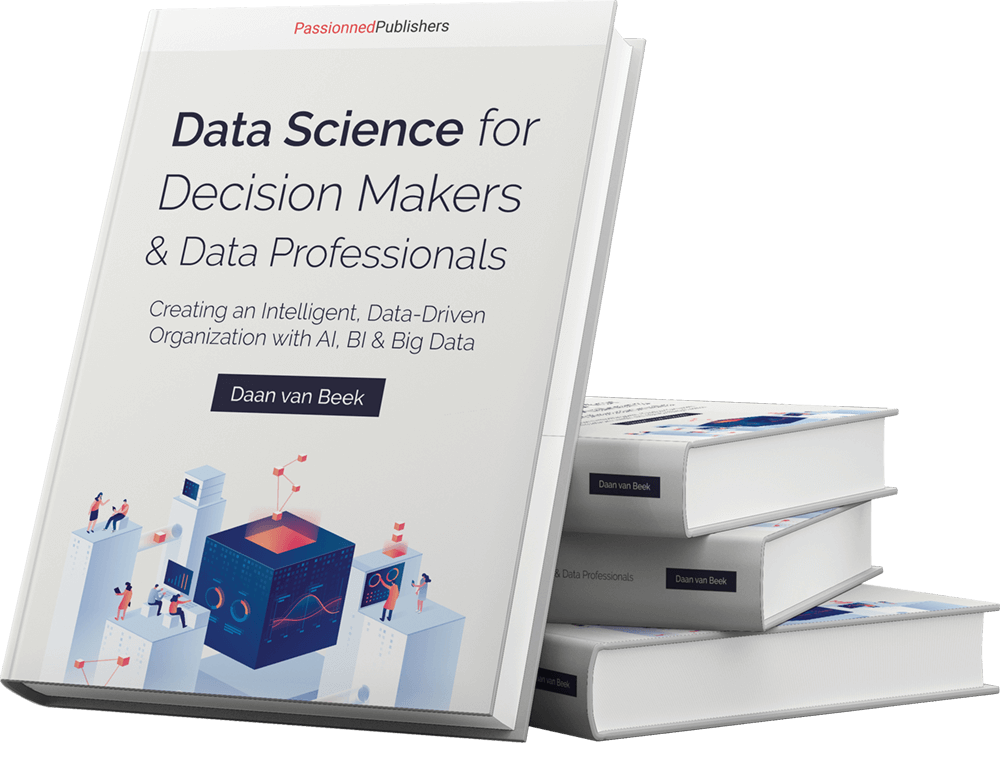Better management information & navigating to improvement
As an administrator, manager, or controller, you understand that good management information and KPIs are essential for effectively guiding your teams and organization. Rather than relying solely on opinions or intuitions, you want to base your decisions on facts and data. But what kind of information do you currently have? And if you have access to management information and KPIs, are they clear and SMART? Even if you’re not part of management, it can still be beneficial to understand how management information and KPIs could affect the way you work. In this article, we discuss the definition of management information, the role of Excel, and the complexities of utilizing management information. We also present our integrated approach and 7 tips to improve your management information.
What is management information?
To clarify exactly what management information is, we provide a definition here. That definition also shows the underlying purpose of management information.
Information that provides insight into the development and performance of processes, people, resources, capital and knowledge to control, adjust, and develop the organization.
This definition comes from the Data Science Book by Daan van Beek.
Excel is convenient but not the smartest solution
It is also well known that it is very labor-intensive to conjure up the right insights from all kinds of data sources. And you know that Excel is not the smartest solution for that. Because spreadsheets are very error-prone. 95% of spreadsheets contain one or more errors. When putting together management information, you see the following questions recurring:
- How do you come up with a set of telling indicators and truly relevant insights?
- How do you get rid of Excel and what affordable alternatives are available?
- How will you use the information consistently for analysis, action, and process improvement?
- How will you secure planning and control cycle numbers? How do you arrange feedback?
- How do you automate the production of management information in a smart way?
Do these questions also play a role in your organization? Then our specialists can quickly help you on your way.
The SMART KPI Guide 2025
With this tool (in PDF format) you determine the most important KPIs and management information for your organization immediately after downloading. The SMART KPI Guide will help you compile crucial management information for your company and get your goals clear and measurable.
 Figure 1: Our proven model allows organizations to work smarter based on powerful information products such as the SMART KPI Guide.
Figure 1: Our proven model allows organizations to work smarter based on powerful information products such as the SMART KPI Guide.
The SMART KPI Guide is not a theoretical model, but a practical manual with which you can get started right away. Using six logical steps, you learn how to work with KPIs as effectively and efficiently as possible. These steps are explored in separate chapters. Without detours and to the point, you will design a management dashboard for your organization.
Why is creating management information such a complex process?
Navigating the intricacies of management information creation presents several challenges.
- A process often results in an arsenal of reports and far too many indicators.
- There may be imprecise definitions as a result of which decision-makers lose themselves in endless discussions
- Management information must be linked to your strategic objectives
- The data quality leaves much to be desired as a result of which decision-makers do not trust the information
- Decisions are delayed because in-depth analysis of the management information is lacking
As a result, no proper (self)management can take place and your margins can quickly be diluted. Without a business intelligence foundation, these problems continue to crop up in the organization. And, unfortunately, often at the most undesirable times.
Do you recognize these challenges? Then it’s time to get acquainted with our integral approach to creating and effectively using management information.
Integrated approach: successful implementation in 10 steps
Our approach is characterized by a combination of expert knowledge, interaction, and fast results. Our experienced experts take a thorough and pragmatic approach and provide high-quality management information.
Is management information only for managers?
You still hear some people say that management information is only for managers. In our view, this is nonsense. Management information should be shared with as many people as possible: employees, customers, and suppliers. That gives power of expression and reveals an enormous improvement potential. Together you can achieve much more in optimizing certain processes and themes. And you want everyone to have access to good management information. Of course, you won’t achieve this transparency overnight. Your teams but especially the management will have to get used to it first. Give them that time too, especially when their dashboard is (still) turning red.
In-depth framework management information & tools
Here are some articles you can use to improve your organization’s information management.
- How do you determine the truly unambiguous KPIs for your organization?
- The 5 biggest blunders with KPIs
Tools for defining and generating management information come in all shapes and sizes. We did extensive research on them.
The book on MI: ‘Data Science Book’
 Our complete management information book (completely revised edition) covers the entire spectrum of management information. With the goal of achieving better management, optimizing processes and making organizations substantially more intelligent. A proven model that we have been successfully working with for fifteen years and that we refine and expand frequently. Order it now.
Our complete management information book (completely revised edition) covers the entire spectrum of management information. With the goal of achieving better management, optimizing processes and making organizations substantially more intelligent. A proven model that we have been successfully working with for fifteen years and that we refine and expand frequently. Order it now.
What good information gets your company:
- Higher quality of service and more successful (self) management
- Unambiguous definitions lead to more dialogue about the numbers themselves
- A solid foundation to make the right decisions faster
- A useful tool for continuously monitoring and adjusting improvement actions
- An organization that is becoming increasingly intelligent and agile
Not to mention: no more abuse of Excel. Get rid of the many spreadsheets.
Perspective planning & control & PDCA
Good management information ensures that departments and teams can work together much better. But also, the different levels in your organization will do more together. This gives you more grip and better control of your processes. And so your organization can start to achieve greater returns.
Score faster together with the same control language
Employees and managers who speak the same control language can score faster together. They will steer from top to bottom on indicators with the same definition. Your organization can thus become more in control, while at the same time creating more room for creativity.
7 tips for better management information
You can substantially improve the quality of your management information with the following tips. Research among more than 400 organizations shows that the following factors are essential to stimulating the use of management information. In order of importance:
- Fine-tune KPI dashboards and reports to the audiences and roles in your organization. This proves critical to the success of a management information system.
- Prevent an arsenal of reports that makes it difficult for users to see the forest for the trees. Offer the right number of reports: not too many, not too few.
- Use color wisely, create easy-to-read, simple charts and other more sophisticated data visualizations. Keep in mind that about 8% of men suffer from some form of color blindness.
- Provide management information with a standard layout. This simplifies the use of the information provided. It also makes your reports and dashboards easier to maintain.
- Provide interactive analysis capabilities in the reports and dashboards. Make it possible for your users to zoom right in on the details and analyze the information from multiple angles. So they can easily get to the bottom line.
- Provide good explanations of management information in the form of a caption and definition manual. That way you prevent multiple versions of the truth from emerging. And you also thus prevent users from drawing conclusions that are incorrect or inconsistent with other conclusions.
- Provide a thorough information analysis so that management information can perfectly match the user’s needs and roles in the process.
Finally, always use an improvement cycle
It is necessary for success to embed management information in an improvement method such as Dr. Deming’s Plan Do Check Act cycle (PDCA). This offers great opportunities for control and continuous performance improvement.
Do you also want to make progress with management information?
Contact us for an appointment with our consultants about the possibilities of management information for your organization. We have many years of experience with building good management information (MI) in numerous sectors.
About Passionned Group
 Passionned Group is a leading specialist in the design and implementation of management information. Our experienced consultants and project managers help larger and smaller organizations to become intelligent, data-driven organizations.
Passionned Group is a leading specialist in the design and implementation of management information. Our experienced consultants and project managers help larger and smaller organizations to become intelligent, data-driven organizations.





